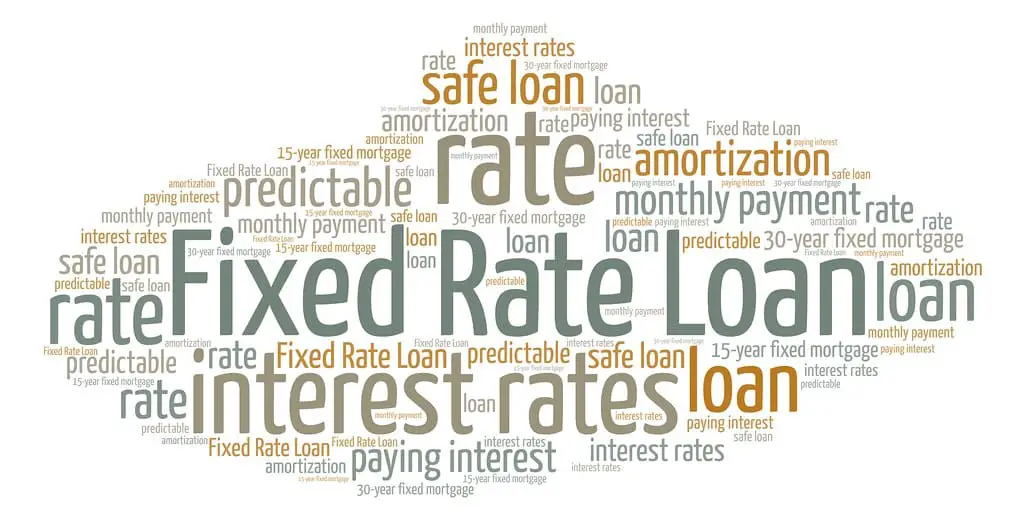Taking a home loan is one of the biggest decisions anyone could make in their life. Investing in a good home is one of the most crucial aspects of living a good and comfortable life.
Hence when deciding on taking a home loan, it is very important to understand everything about the loan, the rate of interest applied, and what type of loan it is.
Key Takeaways
- The fixed rate of interest remains the same throughout the loan term, while the floating interest rate fluctuates with market conditions.
- A fixed interest rate provides stability and predictability in payments, while a floating interest rate offers the potential for lower payments during low-interest rates.
- A fixed interest rate is higher than a floating interest rate, as it offers greater stability to the lender.
Fixed Rate vs Floating Rate
The difference between Fixed-rate and Floating rate is that the rate of interest in a Fixed-rate plan does not change, and it stays the same throughout the loan tenure. On the other hand, in a Floating rate plan, the rate of interest changes depending on the market trends.

A Fixed Rate loan, as the name implies, has a rate of interest that stays the same throughout the loan tenure and does not change in any financial year. The instalments that are to be repaid will be the same for every financial year throughout the time period of the loan.
In a Floating rate plan, the rate of interest on the loan will change according to the current status of the market. A base interest rate is applied during the first instalment, but this base rate fluctuates depending on market trends, and thus the rate may increase or decrease during a given financial year.
Comparison Table
| Parameters of Comparison | Fixed-Rate of Interest | Floating Rate of Interest |
|---|---|---|
| Definition | In Fixed interest rate the rate of interest remains the same during the entire loan tenure and does not change | In a Floating Rate interest plan the rate of interest changes from year to year depending on the market trends of a particular financial year |
| Rate on Interest | The rate on interest is higher compared to the floating rate | The base rate of interest is lower, but it later changes according to market conditions |
| Risks | Lesser risk is involved as the rate of interest is fixed | Risk is more as the rate of interest is volatile and depends on the market conditions |
| EMIs | EMIs are fixed | EMIS change according to interest rate |
| Financial Planning | Budget planning is possible and can be planned beforehand | Budget planning is not possible as the interest may increase drastically for a year |
What is Fixed Rate of Interest?
A Fixed Interest Rate loan is a type of home loan offered by many financial institutions. In this type of home loan, the rate of interest applied is fixed or blocked; thus, the rate stays the same during the entire loan tenure.
The benefit of a Fixed-Rate loan is that the rate of interest is independent of the market conditions or status of a financial year. Thus fluctuations in the market or changes in the financial markets of the country would not affect the interest rate.
Thus the instalments throughout the loan tenure will be the same. This helps in budget planning before opting for the loan, as financial planning is crucial before taking any loan.
The risks involved in this loan plan are also less, as due to a Fixed Rate, the amount in the yearly instalments would not change. This is another benefit of opting for this loan plan, as compared to a Floating Rate loan where higher risks are involved.
The only drawback of this plan is that the rate of interest is higher than the base rate of interest of a Floating Rate loan plan. The rate of interest of a Fixed Rate plan is 1 to 2.5% higher than the Floating Rate.

What is Floating Rate of Interest?
In a Floating Interest rate plan, the rate of interest on the loan changes according to the market conditions in a given financial year. In this plan, the loan is taken on a base interest rate.
But the base interest rate changes after the first instalment, depending upon the market conditions during that given period. Hence the instalments of the Floating Rate plan do not stay the same during the entire loan tenure. The instalments vary from year to year, depending upon the market trends during that year.
The fluctuations in the market heavily affect the interest rate, and thus the instalment for the subsequent year may increase or decrease compared to the instalment of the previous year.
Due to the volatility of the interest rate, the risks involved in the plan are higher than the Fixed-Rate plan, as the interest rate might increase to a drastic value if the market conditions are bad. The market trends influence the value of the instalment for a particular year.
This is the only drawback of the plan as due to the volatility of the market, budget planning for long-term investment is not possible. The base rate for the loan is comparatively lower than the rate for the Fixed-Rate plan, although the rate later changes depending on the market status.
Main Differences Between Fixed Rate and Floating Rate of Interest
- The rate of interest for the loan tenure remains the same in the Fixed Rate plan. In the Floating Rate plan, the rate of interest depends on the market conditions of the country for that year.
- The base rate of interest for a Floating Rate plan is comparatively lower than the rate of interest of a Fixed Rate plan.
- In a Fixed Rate plan, the EMIs are fixed, and the rate is blocked. The EMIs of a floating Rate plan vary due to the volatile nature of the rate.
- Lesser risks are involved in a Fixed rate plan as the interest rate remains the same throughout the loan tenure. Higher risks are involved in the Floating Rate plan.
- Financial Planning can be done beforehand, as the rate will not change during the loan tenure. Budget planning is not possible in a Floating Rate plan.


